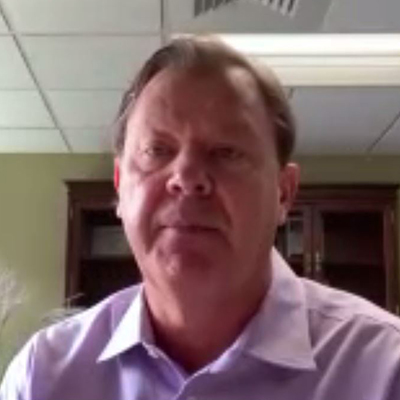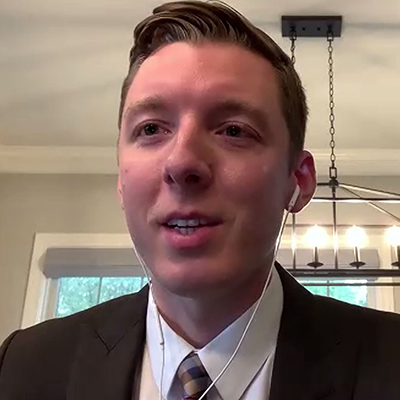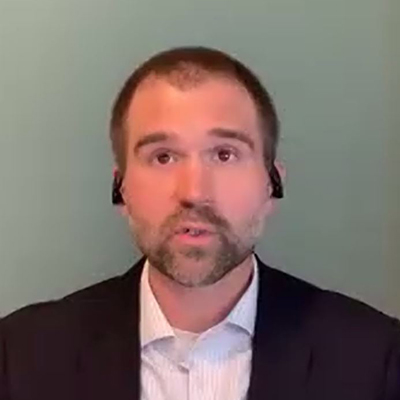The future of the electrical grid, the challenges of modernizing transmission systems and the adoption of new market rules to address PJM’s changing generation mix were front and center during last week’s annual meeting of the Organization of PJM States Inc. (OPSI).
Held virtually for the second year in a row because of safeguards concerning the COVID-19 pandemic, the two-day conference featured panel discussions with PJM officials and stakeholders on work being done to advance the grid of the future while maintaining reliability and stable markets and meeting state decarbonization goals.
Delaware Public Service Commissioner and OPSI President Harold Gray said state regulatory commissioners are facing major challenges that need to be addressed.
“Every OPSI commissioner is going to need to reconcile their state’s policies with a changing grid of the future and decarbonization drivers,” Gray said.
Resilience and Reliability in Transmission Planning

Beth Trombold, vice chair of the Public Utilities Commission of Ohio, and Maryland Public Service Commissioner Michael T. Richard served as moderators of a panel discussing possible changes to PJM’s transmission planning, interconnection and cost allocation processes to better accommodate renewable generation.
Richard focused on comments made by stakeholders in the FERC Advance Notice of Proposed Rulemaking filed in October. (See FERC Tx Inquiry: Consensus on Need for Change, Discord over Solutions.) He said the ANOPR provided an opportunity for stakeholders to work together to “reimagine” what the grid of future may look like while discussing issues like transmission planning and oversight and wait times for projects in the development queue.
 Ken Seiler, PJM | OPSI
Ken Seiler, PJM | OPSIRichard asked the panelists what they hope the FERC commissioners will remember or take away from their comments filed in the ANOPR.
A major focus of PJM’s comments was around the idea that resilience and reliability have to be “foundational and core to everything that we do,” said Ken Seiler, vice president of planning for PJM.
The RTO solicited ideas from stakeholders to find the “major areas of focus,” Seiler said, with members singling out continued interconnection changes as a significant work effort. The RTO’s current interconnection queue is composed of 93% renewable resources, Seiler said, and stakeholder efforts are aiming to generate better cost certainty for interconnection customers while moving projects through the queue faster and more efficiently.
 Sharon Segner, LS Power | OPSI
Sharon Segner, LS Power | OPSI“It’s absolutely critical that we reform this process to generate much more cost certainty for the interconnection customers and certainly move projects through the queue much, much quicker,” Seiler said.
Sharon Segner, vice president of LS Power, said the “historic link” between regional planning and regional cost allocation and competition should be “revisited,” calling for a national bright-line test to be applied and for all transmission lines 100 kV and above to be regionally planned. She also suggested transmission lines below 100 kV but that have regional benefits to two or more utilities should also receive regional planning.
“The grid of the future must be regionally planned and planned by independent entities,” Segner said.
Reliability in Operations
 David Ober, IURC | OPSI
David Ober, IURC | OPSIIndiana Utility Regulatory Commissioner David Ober served as moderator of a panel discussing new products that may be necessary to ensure reliability with the changing generation mix in PJM.
Emanuel Bernabeu, director of PJM’s applied innovation and analytics department, said the energy industry has endured multiple transitions that have all disrupted markets in the past. But the new transition to renewable resources is “special” and unique, including the physics of generation that is evolving from spinning processes to inverters and controllers. He also noted the variable behavior of renewable resources, their economics with high capital investments and zero marginal costs, and the “new balance” between centralized generation and renewable resources.
PJM is currently conducting renewable integration studies to analyze and better understand operational and market impacts of the renewable transition, Bernabeu said, as a strong foundation on simulation scenarios is “going to be critical” into the future to understand reliability issues.
 Emanuel Bernabeu, PJM | OPSI
Emanuel Bernabeu, PJM | OPSI“We don’t have a list set in stone on what exactly are those products that we need to develop,” Bernabeu said. “We think we have some idea, but as always we’re going to work with stakeholders, states, academia and research institutes to really form and shape what these new products ought to be going forward in the future.”
Marji Philips, vice president of wholesale market policy for LS Power, said PJM will need to maintain existing generation resources if the accelerated drive to electrify different sectors of the economy continues. Philips said there’s a “good chance” an even greater amount of investment will be needed to maintain grid reliability.
A need for products to support the changing grid requires a “reconsideration” of the capacity market to also ensure reliability and resource adequacy, Philips said, while products are needed that are flexible and able to respond quickly to dispatch instructions, fuel secure and can continuously operate “beyond a few hours” while providing reserves.
 Marji Philips, LS Power | OPSI
Marji Philips, LS Power | OPSI“Enhancing existing market rules to incent market participants to invest in resources with needed reliability attributes will result in the right outcome for both investors and consumers,” Philips said.
Paul Sotkiewicz of E-Cubed Policy Associates stressed the importance for stakeholders to understand when looking at the changing generation mix, there isn’t a need to get “reliability value” out of zero-carbon-emitting resources if it’s not feasible for them to reach complete reliability.
Sotkiewicz said he worries that if reliability issues aren’t thought through carefully, the transition to more renewable resources could lead to serious economic and emergency events like ones seen recently in CAISO and ERCOT. He said the industry won’t “get a second chance” to make a transition to renewables if the public perception about their reliability is damaged.
“We have to worry about costs, but we also have to be realistic about reliability,” Sotkiewicz said. “If we don’t get the reliability piece right, it doesn’t matter what the costs are because the costs of lost load are going to be far greater.”
The Evolving Markets
 Joe DeLosa, NJBPU | OPSI
Joe DeLosa, NJBPU | OPSIJoe DeLosa, bureau chief of federal and regional policy for the New Jersey Board of Public Utilities, moderated a panel on how capacity market rules need to be revised to accommodate renewable resources.
DeLosa said related issues are taking center stage in PJM with the newly created Resource Adequacy Senior Task Force endorsed at the October Markets and Reliability Committee meeting. (See “Resource Adequacy Charter Approved,” PJM MRC/MC Briefs: Oct. 20, 2021.) He said the OPSI board recently developed its own Competitive Policy Achievement Staff Working Group to continue stakeholder dialogue on capacity market rules.
Adam Keech, PJM’s vice president of market design and economics, said the decarbonization issue is “full of challenges” in the markets. Keech said that it’s important to remember that the capacity market is “not the only tool” that exists to tackle the complexities of decarbonizing the energy sector.
 Adam Keech, PJM | OPSI
Adam Keech, PJM | OPSI“In continuing to think about solutions in terms of the combined effect of the capacity and energy markets, I think it’s critical to make sure that we do decarbonization in the least cost and the best and most efficient sense that we can,” Keech said.
Kathleen Spees, principal at The Brattle Group, spoke about options for the creation of a regional clean energy or capacity market. Spees said a “wide variety” of state clean energy policies exist in PJM, ranging from states with accelerated decarbonization goals to states with no plans for decarbonization.
A regional clean energy marketplace can “add value” to all the states and customers in the region, Spees said, harnessing competition to achieve sustainability goals. She said the value of the energy market is to amplify the capability of the competitive marketplace to “offer low-cost solutions” to customers and have a regional scope of reliability.
 Kathleen Spees, The Brattle Group | OPSI
Kathleen Spees, The Brattle Group | OPSI“It’s becoming more and more clear that we need to take the regional scope and footprint into account in order to help all the states achieve their policies cost effectively,” Spees said.
Pete Fuller, principal of Autumn Lane Energy Consulting, said discussions of changes to capacity market rules need to include all of PJM’s markets. The decarbonization of the grid on a “very wide scale” presents new challenges for markets, and PJM and stakeholders need to think beyond winter and summer peaks and begin thinking about “minute-by-minute” situations on the grid, he said.
“When we move to that kind of a system, the old planning paradigms and the old operational paradigms no longer necessarily hold,” Fuller said.


